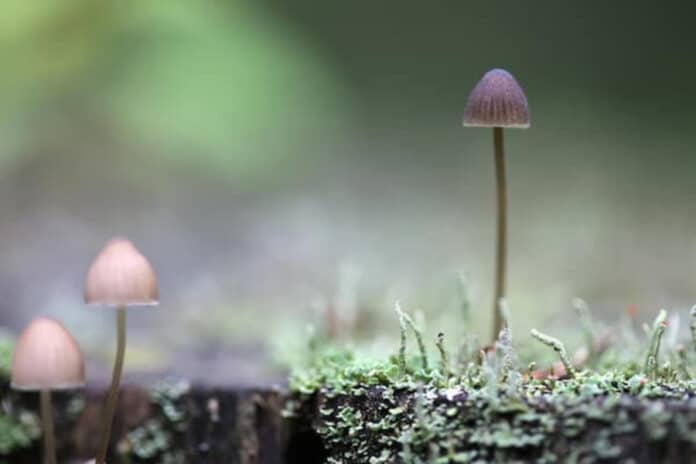
Magic mushrooms have been revered for their unique properties and mind-altering effects for centuries.
These fascinating fungi contain psilocybin, a naturally occurring psychedelic compound that induces profound experiences.
However, not all magic mushrooms are the same. In this comprehensive guide, we will explore the different species of magic mushrooms, how to identify them, and the key factors that set them apart.
Introduction
Magic mushrooms, also known as psilocybin mushrooms, are a type of fungi that contain psychoactive compounds. They have been used for various purposes, including spiritual and recreational experiences. (Buy now to try for yourself!)
In recent years, there has been a growing interest in understanding the distinct characteristics of different magic mushroom species.
What are Magic Mushrooms?
Magic mushrooms are fungi that contain psilocybin, a hallucinogenic compound that affects the brain’s serotonin receptors.
They belong to the genus Psilocybe, which comprises numerous species with varying appearances, potency, and effects.
Common Magic Mushroom Species
There are several common species of magic mushrooms, each with its own unique characteristics.
Some well-known species include Psilocybe cubensis, Psilocybe semilanceata, Psilocybe cyanescens, and Psilocybe azurescens.
These species can be found in different regions worldwide and often have distinct physical features.
Identifying Magic Mushrooms
Identifying magic mushrooms requires careful observation and knowledge of key features. Factors such as cap shape, color, gills, and spore color can help in distinguishing one species from another.
It is essential to consult reliable resources or experts to ensure accurate identification and avoid misidentifying potentially toxic mushrooms.
Differentiating Magic Mushroom Species
While magic mushrooms share common characteristics, they also exhibit differences in potency, effects, and geographic distribution.
Understanding these variations can help users make informed choices and tailor their experiences to their preferences.
Psilocybin Content and Effects
The psilocybin content in magic mushrooms can vary significantly among species. This disparity influences the intensity and duration of the psychedelic experience.
Some species may have higher concentrations of psilocybin, leading to more potent effects, while others may contain lower amounts, resulting in milder experiences.
Safety Precautions
Using magic mushrooms responsibly involves taking certain safety precautions. These include researching the specific species, starting with low doses, being mindful of set and setting, and having a trusted companion present.
It is crucial to prioritize physical and mental well-being and approach the experience with respect and caution.
Legal Status of Magic Mushrooms
The legal status of magic mushrooms varies across countries and regions. While some places allow controlled use for medical or research purposes, others classify them as illegal substances.
It is essential to familiarize oneself with the local laws and regulations regarding magic mushroom possession, cultivation, and consumption.
Benefits and Risks of Magic Mushroom Use
Magic mushrooms have been associated with various potential benefits, including enhanced creativity, personal insights, and therapeutic applications. However, like any substance, they also carry risks.
It’s important to understand both the potential benefits and risks before deciding to use magic mushrooms.
The benefits of magic mushroom use can include profound spiritual experiences, increased self-awareness, and expanded consciousness.
Many individuals report a sense of connection to nature, enhanced creativity, and a deepening of their understanding of the world around them. Some studies suggest that psilocybin, the active compound in magic mushrooms, may have therapeutic potential for mental health conditions such as depression, anxiety, and post-traumatic stress disorder (PTSD).
However, it’s crucial to approach magic mushroom use with caution. Psychedelic experiences can be intense and unpredictable, and they may not be suitable for everyone.
It’s essential to consider personal mental health history, current medications, and any underlying medical conditions before using magic mushrooms. Some individuals may experience challenging or adverse reactions, such as anxiety, confusion, or paranoia, especially at higher doses.
Therefore, it’s recommended to start with low doses and be in a supportive and comfortable environment.
Medical Applications of Psilocybin
In recent years, there has been a resurgence of interest in the therapeutic potential of psilocybin, the primary psychoactive compound in magic mushrooms. Several clinical studies have explored the use of psilocybin-assisted therapy for various mental health conditions.
These studies suggest that psilocybin may help alleviate symptoms of depression, anxiety, addiction, and existential distress in some individuals.
It’s important to note that psilocybin-assisted therapy is conducted under controlled settings with trained professionals. The therapy involves careful preparation, support during the experience, and integration afterward.
While the research is promising, it’s still in its early stages, and further studies are needed to fully understand the potential benefits and risks of using psilocybin for therapeutic purposes.
Cultivating Magic Mushrooms
For those interested in cultivating their own magic mushrooms, it’s crucial to approach the process with care and responsibility.
Cultivating magic mushrooms involves creating the right growing conditions, obtaining the necessary supplies, and following proper sterilization and cultivation techniques. It’s essential to thoroughly research and understand the process to ensure a safe and successful cultivation experience.
Using Magic Mushrooms Responsibly
Using magic mushrooms responsibly involves several key considerations. First and foremost, it’s essential to prioritize personal safety and well-being.
This includes choosing a comfortable and supportive environment, being in the company of trusted individuals, and starting with low doses.
It’s also important to be aware of the legal implications of magic mushroom use in your jurisdiction and to respect local laws and regulations.
Additionally, responsible use involves being mindful of set and setting. Set refers to one’s mindset and emotional state before consuming magic mushrooms, while setting refers to the physical and social environment.
Creating a positive, calm, and secure setting can contribute to a more positive experience.
Lastly, integration is an essential aspect of responsible use. After the psychedelic experience, taking time to reflect, process, and integrate the insights gained can be beneficial.
Integration may involve journaling, engaging in meaningful conversations, or seeking support from therapists or support groups.
Conclusion
Magic mushrooms offer a unique and profound journey into altered states of consciousness. Understanding the different species, identifying them accurately, and recognizing the nuances between them is crucial for a safe and fulfilling experience.
While magic mushrooms have potential benefits and therapeutic applications, responsible use and awareness of the risks are essential.
By approaching magic mushroom use with respect, caution, and informed decision-making, individuals can explore the fascinating realm of these transformative fungi.
FAQs
Are magic mushrooms legal?
The legal status of magic mushrooms varies across countries and regions. In some places, they are classified as illegal substances, while in others, they may be decriminalized or allowed for medical and research purposes. It’s crucial to familiarize yourself with the specific laws and regulations in your jurisdiction before considering the use or cultivation of magic mushrooms.
How can I identify different species of magic mushrooms?
Identifying different species of magic mushrooms requires careful observation and knowledge of key features. Factors such as cap shape, color, gill structure, and spore color can help differentiate one species from another. It’s recommended to consult reliable resources, field guides, or experienced mushroom hunters for accurate identification. Remember, misidentification can have serious consequences, so it’s important to exercise caution and seek expert guidance.
What are the potential risks of using magic mushrooms?
While magic mushrooms have been associated with various benefits, it’s essential to acknowledge and understand the potential risks. These may include experiencing a challenging or overwhelming trip, especially at higher doses. Some individuals may also be more susceptible to adverse psychological reactions or have underlying mental health conditions that can be exacerbated by psychedelic experiences. It’s crucial to approach magic mushroom use with caution, respect, and proper preparation.
Can magic mushrooms be used for medical purposes?
Research suggests that psilocybin, the active compound in magic mushrooms, may have therapeutic potential for mental health conditions. Clinical studies are exploring its use in treating depression, anxiety, addiction, and other conditions. However, it’s important to note that medical use of psilocybin is conducted under controlled settings with trained professionals. If you’re considering using magic mushrooms for medical purposes, it’s crucial to consult with qualified healthcare providers and explore legal and regulated options.
Are there any long-term effects of using magic mushrooms?
The long-term effects of magic mushroom use are still being studied. While there is no evidence to suggest that using magic mushrooms leads to physical dependence, excessive and frequent use may have psychological implications. Some individuals may experience persistent changes in perception, cognition, or mood. It’s important to use magic mushrooms responsibly and be mindful of your frequency and dosage to minimize any potential long-term effects.








